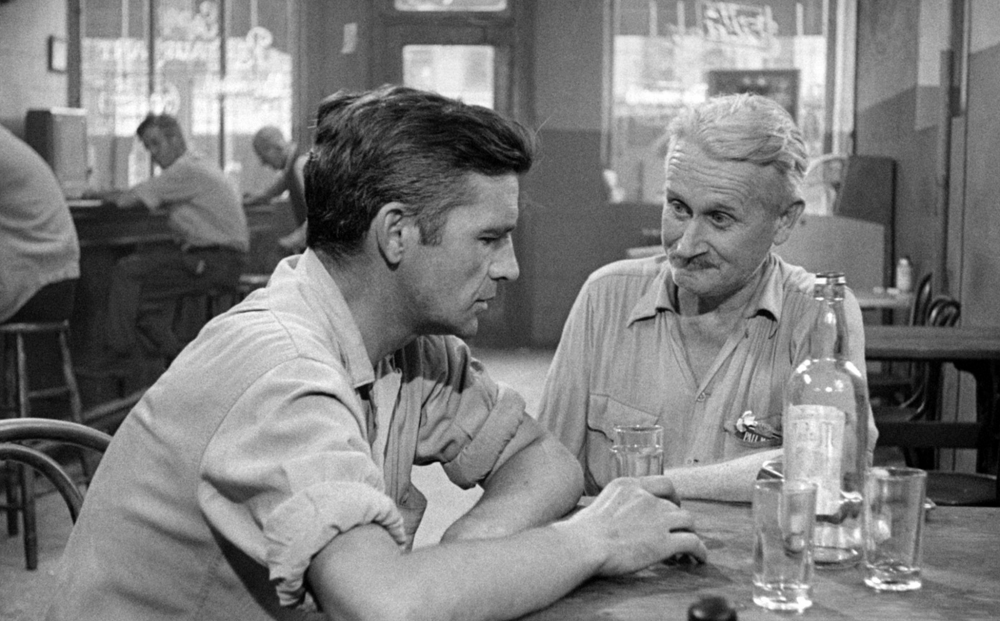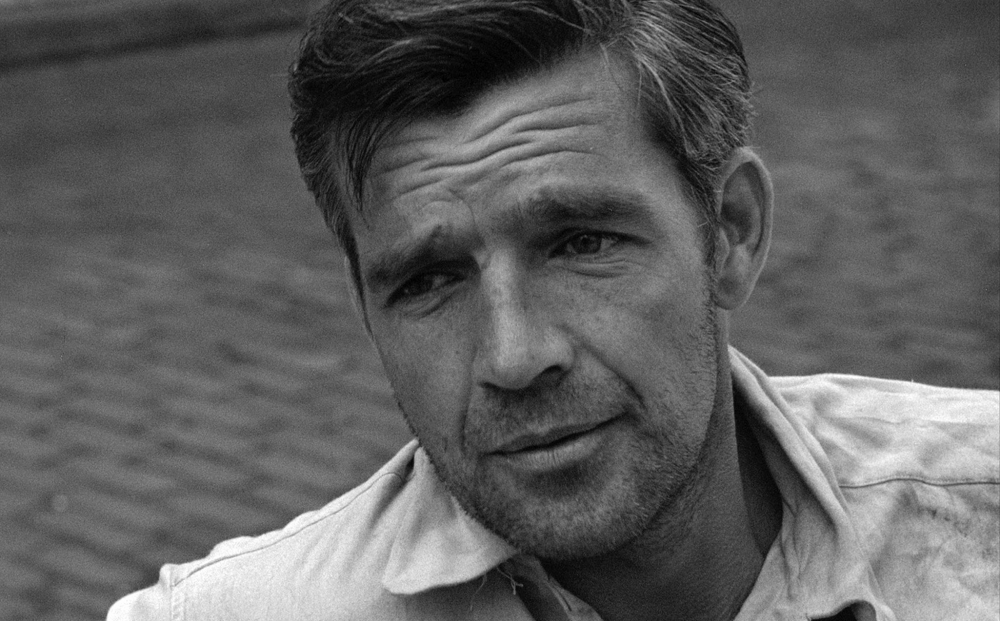ON THE BOWERY
U.S., 1956
Directed by Lionel Rogosin
With Ray Salyer
Approx. 65 min. 35mm.
New York, the 50s, stark, sharp, beautiful black and white; men sleeping on the street, on park benches, in doorways — one reading an old Esquire stretched out on a pushcart — men being rousted by the cops, being kicked out of bars, arguing at the top of their lungs; men listening to patently sincere pep talks from recovered drunks at the mission, marking out their spots on the floor for the night with newspapers, looking up through the chicken wire ceilings over their beds at the flophouse: three days in the life of straight-from-the-road Ray Salyer, fresh-faced arrival on the Bowery, America’s #1 Skid Row (which then included parts of today’s SoHo). Taken in hand by old-timer Gorman Hendricks, a puckishly charming bull slinger, Salyer goes on two benders, quits twice, hops on a truck for a day job, but finally states, “Me, I only care for one thing.” Wealthy scion of a major fabrics firm (and later owner/operator of the Bleecker Street Cinema), Rogosin found himself dawn to a world of injustice, then, starting close to home, spent six months hanging out on the Bowery, often under the tutelage of Hendricks, a cirrhosis of the liver sufferer who held off from a fatal last bender until the end of shooting. Shooting for four months with cameraman Richard Bagley (THE QUIET ONE), Rogosin stages scenes improvised from a sketchy story line, alternating with sequences taken by hidden cameras — all with non-pro Bowery denizens. The result: Best Documentary, Venice Film Festival and Oscar nomination for Best Documentary Feature, along with critical attacks from the likes of Bosley Crowther and Clare Booth Luce for showing the dark side of America.
With support from the Robert Jolin Osborne Endowed Fund for American Classic Cinema of the 1930s, ‘40s, and ‘50s.
Reviews
“A quintessential chunk of NYC history and not just because the old Third Avenue elevated is a harsh and haunting presence. Rogosin used a hidden camera and some cannily staged scenes to dramatize a particular white working class culture where desire under the El is mainly for a bottle of cheap muscatel… Closer to an underground movie than cinema vérité. The final montage of this classic human document is an unanswerable j’accuse: scores of life-battered faces staring down the camera.”
– J. Hoberman, Village Voice
“Balances gritty documentation with obviously scripted interludes, affirming that the greatest nonfiction films aren’t a question of nominal objectivity, but morality. A must-see for anyone who cherishes the old soul of New York.”
– Manohla Dargis, The New York Times


